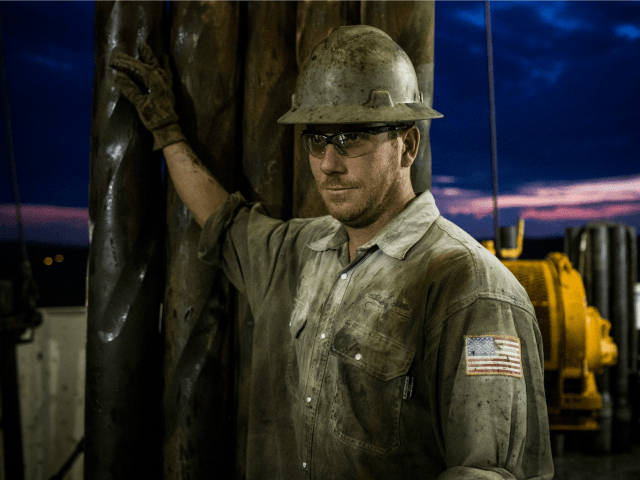Fitch Credit Ratings has declared that the profitable doubling of U.S. oil drilling over the last 9 months means the reemerging U.S. shale boom is a potent threat to Saudi Arabia — despite the Saudis declaring a price war in 2014.
According to the Fitch report released on March 7, “The recovery in US drilling activity will drive up shale oil production in the second half of 2017, offsetting a portion of recent oil price gains.” The rating agency’s comment follows an effort by Saudi Arabia that began in October 2014 to drive the price of oil down from over $100 a barrel in an effort to kill the U.S. shale boom.
Fitch cited the Baker Hughes U.S. crude oil drilling rig count that fell last year to 316 for the week ending on May 27, the lowest level since the 1940s, but has since jumped 93 percent to 609 on March 3. Fitch said that due to booming U.S. production, “We therefore expect average oil prices for the year to be below those in January and February.”
Breitbart News reported that Saudi Arabia was a prime beneficiary from the 1998 to 2014 commodity “supercycle” that saw the oil price rise by 1,062 percent to a high of $116 a barrel. The resulting tsunami of cash flow allowed the nation of 31 million, where only 5.5 million have jobs, to accumulate $737 billion in foreign exchange reserves, while fully subsidizing a Western upper-middle-class lifestyle for the population.
Despite Saudi Arabia needing a price of $90 per barrel to fund its lavish domestic entitlements, the kingdom in mid-2014 spiked production by 2 million barrels a day to destroy the U.S. oil fracking industry — which, based on a $90 a barrel breakeven cost, had more than doubled U.S. crude oil production to 9.3 million barrels a day.
According to George Friedman of Geopolitical Futures, the price war cost Saudi Arabia at least $198 billion though January 2017, and created a worldwide surplus that drove the price oil down to an 18-year low of $23 a barrel in January 2016. Even after modest production cutbacks since then, the price only partially recovered, to about $53.18 a barrel.
The Saudi predatory attack caused a large number of bankruptcies across the U.S. oil patch and sent U.S. crude oil production skidding to 8.4 million barrels a day by mid-2016. But instead of the American shale boom going bust, the U.S. Energy Information Agency reported that domestic crude oil production hit just 9.1 million barrel a day.
Peter Zeihan, in his new book The Absent Superpower, reveals that a combination of 40 percent cost-cutting, plus technological advances that quadrupled the amount of oil recovered from each well drilled, have together slashed the breakeven cost in the four largest “shale fracking plays” to about $40 a barrel. He predicts that the breakeven could drop to $25 a barrel by 2019, making U.S. shale producers the lowest cost oil producers on the planet.
With oil trading in the $50 range, and Saudi Arabia still running a multi-billion dollar monthly deficit, Geopolitical Futures reported that King Salman Bin Abdulaziz announced that the Saudi Aramco state-owned oil monopoly will go public in 2018.
With what Geopolitical Futures refers to as harsh economic realities of negative cash flow hammering Saudi Arabia’s solvency, King Salman has been forced to go, keffiyeh in hand (along with a 1,500-strong entourage and 908,000 lbs. of luggage), on a six-nation Asian tour that includes stops in Malaysia, Brunei, Maldives, Indonesia, China, and Japan to try drum up demand for the price of Saudi Aramco shares.
The world standard Brent Crude Oil price fell $2.81, or 5 percent, to $53.11 a barrel on the London ICE Futures Europe Exchange on March 8, its lowest close since Dec. 7.

COMMENTS
Please let us know if you're having issues with commenting.